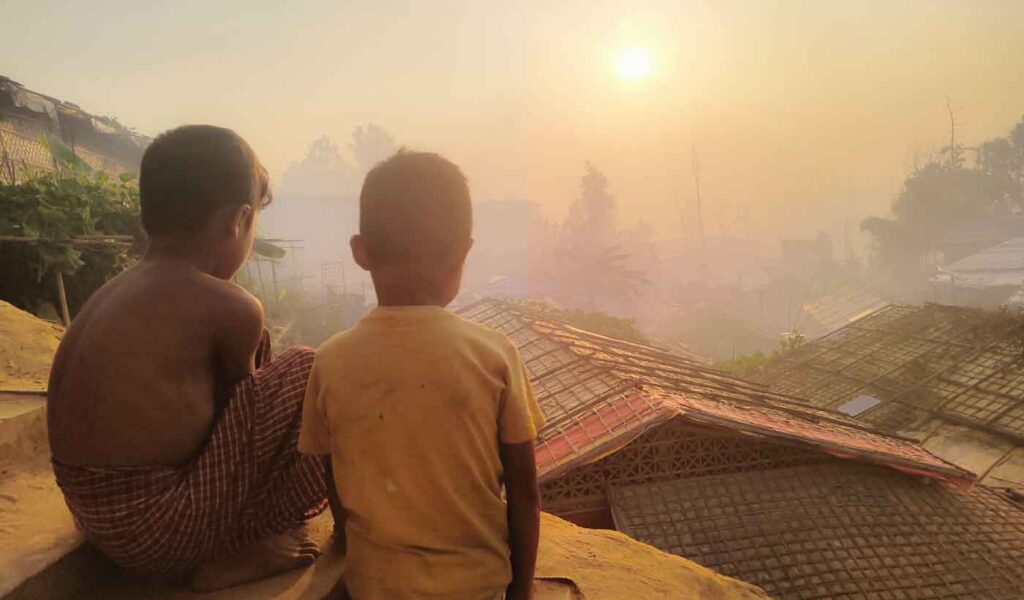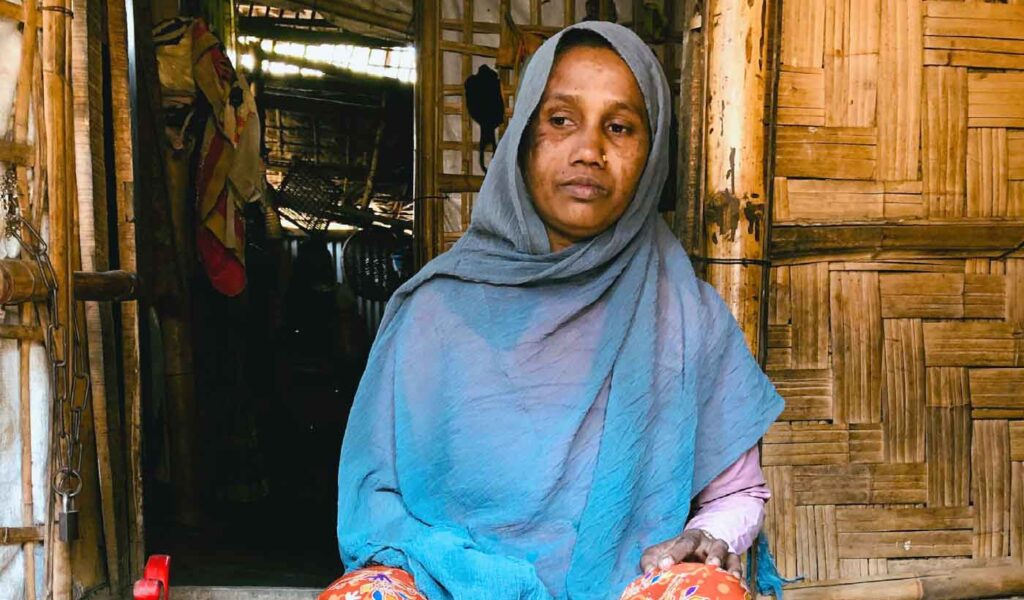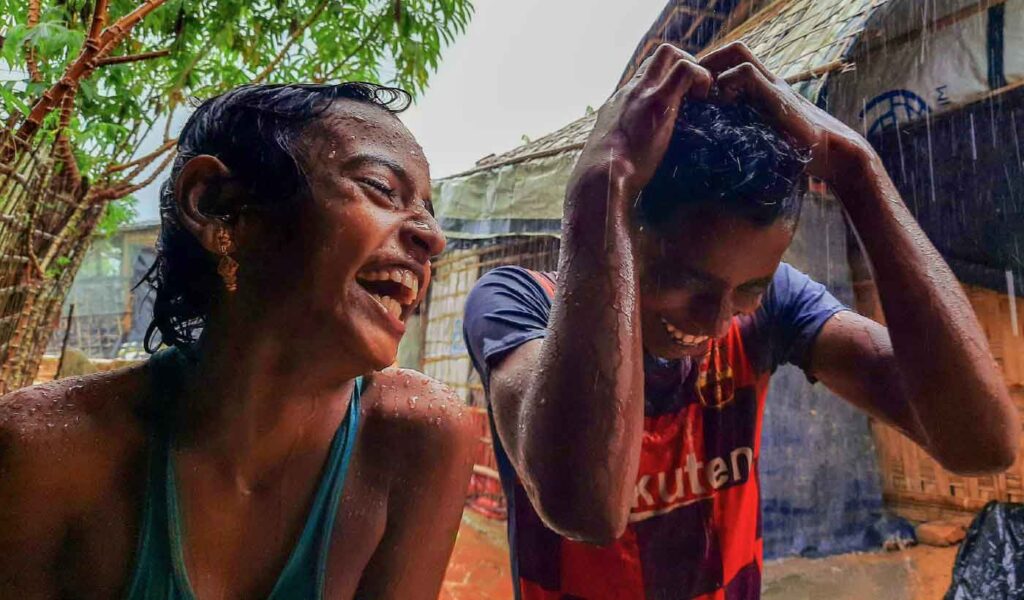Rohingyatographer Magazine: Behind the Zine with Sahat Zia Hero
Editor’s note: This interview was published on June 22, 2022. Since publication, the second edition, Rohingyatographer Magazine #2, came out!
Sahat Zia Hero is the founder, editor, and photographer of Rohingyatographer Magazine, a new publication that showcases the work of photographers from the Rohingya community in Cox’s Bazar, Bangladesh—the world’s largest refugee camp.
In this behind-the-scenes interview, he discusses the motivations for starting the magazine, the challenges of curating its content, and the importance of displaced Rohingyan photographers portraying their own stories to an international audience.
1. The story behind Rohingyatographer Magazine
Tell us the story of Rohingyatographer Magazine. How did it come to be? What is the goal of the publication?
Rohingyatographer is a photography project produced by a team of talented young Rohingya refugee photographers. We are based in the world’s largest refugee camp in Cox’s Bazar, Bangladesh. We are a displaced community of around 1 million people living here.
In 2020, I met a Spanish professional photographer and humanitarian named David, who was working in the refugee camp. We kept in touch, and in 2021 I asked him to help me publish my first photo book. We teamed up remotely, and he helped me through the process. He suggested I self-publish it through Blurb so I could get some income. I enjoyed working with him very much, so the idea for Rohingyatographer grew out of that first experience.
I love photography, and I have a few friends who share this passion because we use photography to advocate for our rights and try to make a difference for the Rohingya refugee community. Photography is our superpower!
Life in the refugee camp is not easy. Over 50% of our population are children under the age of 18. There is limited access to formal education, so the Rohingya youth have a serious gap in their education. They are at risk of becoming a lost generation.
Nevertheless, we Rohingya have a strong commitment to educating ourselves—as well as teaching others. So photography has grown to be a very popular subject for us. We also have helped many international journalists navigate the camps, finding and fixing stories.
As a result of the COVID-19 lockdown and travel restrictions, international journalists could no longer come to the camps. This fostered a collective of Rohingya photographers to start using social media to tell their own stories. They became journalists and photographers in their own right, and now they work remotely for international media outlets.
The goal of this self-published zine is to provide Rohingya youth with a creative platform using photography to document all aspects of our life here. Sometimes the international media does not portray us with the dignity we deserve, so this project is about allowing our community to portray ourselves and be known for our creativity, talent, and aspirations for our future. Although it is very uncertain, we have a future!

2. The first issue
This first issue is dedicated to identity among the Rohingya refugee community. Why was this theme chosen to begin the publication? Why now?
Because we are in a complicated situation, we cannot return home to Myanmar, and we cannot move forward towards a dignified future—a future with access to education and opportunities like anywhere else in the world. Our identity is ultimately threatened.
We chose the subject of identity because we wanted the first issue to be a collective portrait of the Rohingya refugee community. We set the team to the challenge of finding individuals of every age in the community, and that is how the idea for the layout of the magazine was born.
The photographs featured are displayed chronologically, from the youngest Rohingya baby of two months to the oldest man, aged 102 years. As a collective portrait, born to grow and honor our strength, endurance, and resilience.

3. The team
Who makes up the team behind the magazine and cameras? And how did you choose whom to show in the portraiture?
The team for the first issue is made up of 11 people. I’m the founder, editor, and one of the photographers. The rest of the photographers are Ro Yassin Abdumonaf, Azimul Hasson, Abdullah Khin Maung Thein, Hujjat Ullah, Md Jamal, Shahida Win, Enayat Khan, Md Iddris, and Omal Kahir. David is our mentor and graphic designer. You can check their profiles on our website.
The photographers had total freedom to find characters, sometimes they knew someone with an interesting background or a story to tell, and sometimes it was just the moment that caught their attention. Overall it was an organic process that slowly came together.
4. The purpose of the project
Your project aims to promote self-expression and photography skills for Rohingya youth. How does your project help accomplish this?
Each photographer has their own individual visual language. Some focus more on a journalistic approach, trying to capture the essence of the story and person they are interviewing; others are more experimental in their approach to using the camera, playing with curious angles and situations that result in very interesting images. There are no rules really, photography is a vehicle for self-expression, and as long as we keep practicing, we will obtain results.
I myself am still learning every day. I use photography to learn about observation, but also it helps me deal with and embrace the problems we face every day living here. For example, in March 2021, there was a big fire in the camps. Over 50,000 Rohingya lost their homes, and many lives were lost to the fire. My shelter burnt to the ground. My family was safe, but I lost everything (again), including my laptop and pen drives, where I kept my images and documents. It was a tough time, but I don’t give up easily, so I used my camera phone to document the aftermath of the fire.
5. Audience takeaways
What do you hope your audience takes away from this magazine?
We hope our zine audience will be interested in seeing the life of the Rohingya refugee community through our own eyes. We want to share our experiences with them and, hopefully, help people see us in a new light—our life with all its color. We know we are much more than our surroundings and the labels we are given. We want people to see us as human beings, just like everyone else, and share our hopes and dreams, our sadness and grief with others—to make connections.

6. Getting to know Cox’s Bazar
More broadly speaking, what should the world know about Cox’s Bazar?
Cox’s Bazar is in the southeast of Bangladesh and shares a land border with Myanmar. Since 1978, the Rohingya people have fled Myanmar five times following different outbreaks of violence and discrimination. The Rohingya people came to Cox’s Bazar and received support until it was safe for them to return to Myanmar.
But in 2017, this was the largest exodus of people that ever took place. Right now, we feel like we are stuck because we don’t know when it will be safe to return. The political situation is very complicated.
Cox’s Bazar is a beautiful district with one of the longest beaches in the world, but unfortunately, we cannot travel outside the camps. The people in Cox’s Bazar also face many challenges, including poverty, lack of opportunities, and climate change.
7. On self-publishing
Why do you think self-publishing is important?
Here in the refugee camps, we have very limited opportunities to engage with the outside world. Working on the development of this magazine has been an incredible opportunity for us and something we are really proud of. This would not have been possible without the platform of a self-publishing magazine. This was my second time making a full publication from scratch. I loved it!
How did you design this magazine?
We sent the photographs to David, a graphic designer, and he put it all together. He used InDesign to make the layout. He designed the layout—placing the images in chronological order so the narrative reads from the youngest to the oldest portrait. The idea was for the magazine to feel like a collective portrait. He did a pretty good job! We are very lucky to have him.
Do you have any tips or suggestions for others hoping to create a magazine?
I’ve learned many things during this project. The first tip I would give is to have motivation—to wake up every day and focus on your goal. Some days are better than others, but if you keep the goal in mind, you will always get there. Don’t focus on the limitations, but rather on your goal, and each day, take steps towards achieving that goal.
For this project, creating and managing the content was crucial for me, especially because I had to manage a team producing the content. It was not always straightforward to complete the puzzle we set ourselves, but in the end, we got there, and it feels like an incredible achievement.
7. Final few
Is there anything else that you’d like to share?
If people are interested to know more about this project, visit our website and of course—please buy the magazine! Any money we earn will go into the production of the second edition of the magazine. We haven’t decided on the theme for the next issue yet, but we have lots of ideas in mind!
***
Inspired to create a zine about your community? Start one today!

